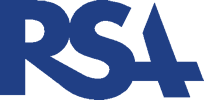Complete Story
Building Sophware: Modeling Theoretical Approaches to Technical and Professional Writing with Computational Methods
Workshop Leaders: Bill Hart-Davidson, Michigan State University; Ryan Omizo, University of Rhode Island
Workshop Leaders:
Bill Hart-Davidson, Michigan State University
Ryan Omizo, University of Rhode Island
Participants in this hands-on workshop will learn to apply computational methods - including network analysis & graph theory, natural language processing & text mining, and activity stream analysis - to invent new analytic and heuristic approaches to technical and professional writing. A special emphasis will be placed on building a computational model inspired by rhetorical theory - ancient or contemporary.
We have designed this workshop after the successful NEH Office of Digital Humanities "One Week, One App" experience. Participants will work together as a project team to build a sample app. Ahead of our meeting in Madison, the workshop facilitators will provide advance access and tutorials to tools and data sets as well as several well-documented example applications we have built. The group will engage online in reading and discussion to narrow down project possibilities. This will allow us to use the institute time to design and build a prototype application. After the workshop, participants will be invited to take the groups' work further or in new directions.
We encourage scholars at all levels interested in applying rhetorical theory to workplace writing genres and other forms of technical and professional communication to participate. Because we will work as an integrated team, participants need not have any prior experience with software development or computational analysis, though interest in learning more about these is certainly required. For those with technology backgrounds, we will be using Python as our primary development language and incorporating other modules as needed to produce a web services data layer with a browser-based presentation layer.
Questions should be directed to Bill Hart-Davidson, hartdav2@msu.edu




